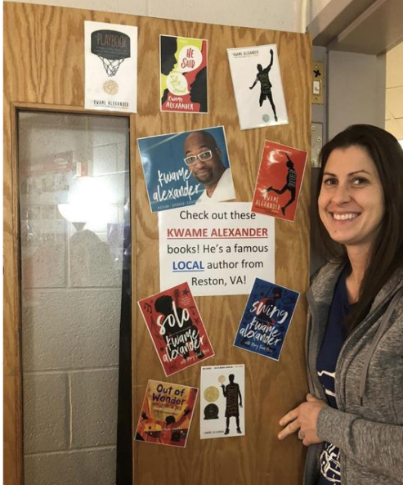 Rebuilding a struggling learner's confidence isn’t easy, but it is possible.
Rebuilding a struggling learner's confidence isn’t easy, but it is possible.
In this blog, we learn from Katherine York, a reading specialist at Walt Whitman Middle School, in Fairfax, VA. "There is no better feeling than the joy of seeing a struggling reader succeed," said Ms. York, "but students are failing by the time they come to my class. It makes me sad to think about all the students who would rather do anything else but read."
Giving students hope to improve their reading ability is what this educator does best. A common theme among struggling readers is the lack of honest conversations about their reading barriers with a friend, teacher or family member. "It’s a terrible cycle of failure," says Ms. York. "They can't read. They don't talk about it. They read poorly. Their test scores show it. They don’t want to read.”
Why are so many students struggling to read well? In Ms. York’s classes, she cites these situations.
-
Teachers need to be fully resourced and knowledgeable about evidence-based reading instruction grounded in leading brain science.
-
Students don’t think it’s cool to carry books and are often bullied for doing so.
-
Students have a learning difference that impedes their ability to process information in print, such as dyslexia.
-
English isn’t their first language.
-
Students don’t understand how to navigate the maze of books in school libraries.
-
Students aren’t given many opportunities to select culturally-relevant books that interest them.
-
Academic conversations about books aren’t part of the curriculum.
-
Students come from lower socioeconomic status families and typically have less access to books and reading role models.
-
Students don’t know what kind of books they like to read.
-
Students don’t have class time to delve into a book for independent reading practice.
Making Time for Independent Reading
Class time for independent reading is a frequent challenge for many schools, but Ms. York's Virginia school district allots 90 minutes of reading time three times a week. Ms. York believes in-class reading is beneficial and notes that if students know they have time to read, their commitment is stronger. She wants her students to feel relaxed and comfortable, so they can focus on the task of reading. She gives students choices of reading in comfy bean bag chairs, swivel chairs and rockers. She even has an exercise bike. One student listening to an audiobook was so caught up in a story, he rode three miles!"
For the first half hour of class, students don their headsets and dive into an audiobook from Learning Ally's library. They pair with a classmate to discuss the story and decide how to demonstrate their comprehension in the form of a book report, an oral report, acting out a scene, designing a poster, a fun guessing game of “who am I,” or Q&A with Ms. York. "Multiple ways of learning resonate with struggling readers," she emphasizes. This strategy is called UDL or universal design for learning.
Part of keeping students on goal is to make sure they understand their Lexile level at the beginning of class. They take quarterly assessments to measure reading progress. They read independently – a critical part of becoming a good reader. They commit to read for 30 minutes a day in school and at home. Through probing discussions, students explore topics that interest them. They learn about various genres and authors. They read diverse literature and books about celebrities like LeBron James and Henry Winkler who struggled to read. Small rewards keep them motivated—from a simple hug or a sympathetic ear, to reading certificates and class recognition.
One student didn’t like to read anything. Ms. York assigned him Kwame Alexander’s book Swing from the Learning Ally library. "He couldn’t put the book down," said Ms. York. "He hugged me and told me how much he enjoyed it. He related to the story and the characters. He felt enormous pride that he read the book cover to cover. I saw a change in his demeanor – a tangible result of giving him the right book at the right time."